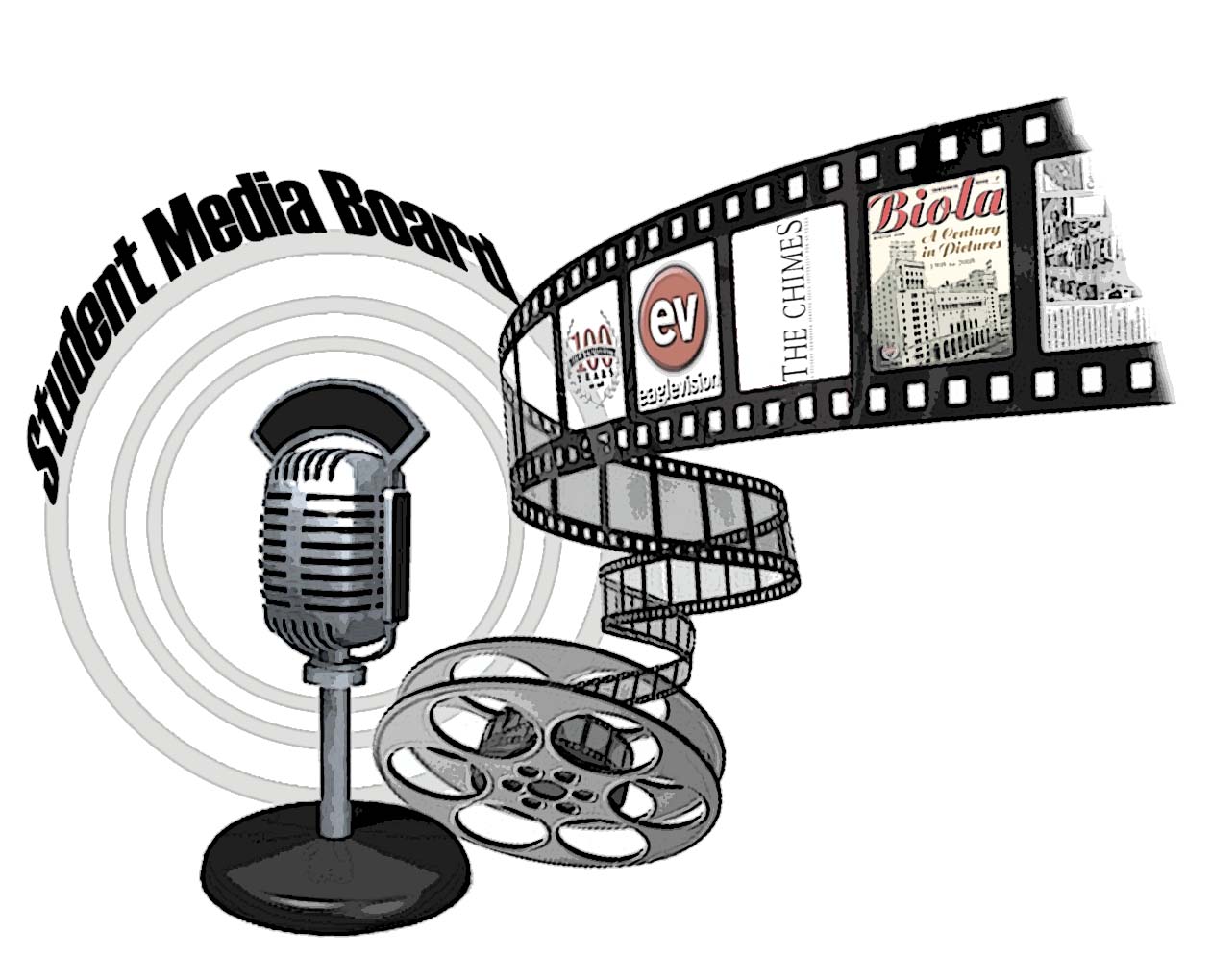Biola University’s various student media groups will collectively come under the authority of the recently approved Student Media Board by the end of the semester in an effort to create more effective and professional news media operations on campus.
Associated Students (AS) voted Tuesday to officially remove The Chimes and The Biolan from AS leadership and move them to a more independent position under the guardianship of the Student Media Board according to Jared Gibo, AS President.
Student media groups affected on campus include The Chimes, The Biolan, EagleVision, Biola Radio and The Point magazine.
The proposal for the student media board came about as a result of a general dissatisfaction among Biola faculty and staff in on-campus media. When Dr. Doug Tarpley, dean of fine arts and communication, arrived in 2003, he observed that Biola’s operation of student media did not meet the standards of other public and private college institutions. Former Biola President Clyde Cook also felt the need for improvements in student media according to Tarpley.
“Some of the media, for example, are funded by the department, some have no funding, and some are funded by AS,” said Tarpley. “Some have very structured practicum experiences for students with faculty making a lot of effort to teach them. Others have very little direction.”
The purpose of the Student Media Board is to establish continuity and objectivity to Biola’s student media groups added Tarpley. It will oversee budgets, appoint editor positions, and handle grievances for each individual student media group.
The Chimes and The Biolan are perhaps the most directly affected student media groups at this time. Responsibilities involving funding and choosing editor positions have been transfered from AS to the Student Media Board.
“We all believe this is in the best interest of all parties involved,” said Gibo. “We believe the Chimes and Biolan will be able to grow at a greater rate, and it makes fundamental sense to have the student newspaper separate from the government they report on.”
Jenna Bartlo, editor-in-chief of The Chimes, also felt that separating from AS would help the publication maintain an objective outlook.
“There has not been any issues in the past, however, there is the possibility of a conflict of interest for a Chimes reporter covering AS events because AS also funds The Chimes,” Bartlo said.
Receiving funds through AS has also slowed the process of getting proposals approved for improvements in the publication.
“Once The Chimes is no longer under AS, The Chimes will have a more open ear to journalistic budget problems and have better guidance over the budget as a whole,” Bartlo said. The Chimes ad revenue will also be returned to The Chimes now, instead of going back to AS, which will assist in publication improvements.
According to Tarpley, the Student Media Board plans to hire student business managers to sit in on editorial meetings and handle budgets for each media outlet. This system provides a more professional model for both The Chimes and The Biolan, especially in acquiring extra expenditures that are not originally in the budget.
Each publication must acquire independent ad revenue and can no longer propose for extra funds through AS.
Alex Elmore, editor-in-chief of The Biolan, notes that one of the most significant changes for the publications may be the board’s handling of grievances: complaints from inside or outside the Biola community.
According to the Student Media Board Charter, the board will “act as an arbitration board in resolving problems that cannot be resolved by student leaders in consultation with a faculty adviser.”
Although some may suggest that the board has the opportunity to apply a degree of censorship on student media, Tarpley explained that the board works to instead protect freedom of the press at Biola.
“It strengthens the independence of media because now there’s a buffer between administration and them … it is a way of protecting student expression on campus,” Tarpley said, affirming that Biola’s administration can have no direct say in student media operations.
Eric Lapointe, director of leadership development, had similar thoughts regarding questions of censorship. “I think the student perception is that the media board is going to get involved in our stories, going to tell us what we can and can’t print,” said Lapointe. “In actuality, the student media board is going to have no involvement in the day-to-day activities of any of the media outlets.”
Elmore also acknowledged that the current degree of freedom given to student media groups, like The Biolan, will probably stay the same.
“There is still a possibility of an irresponsible or unaware editor to publish something inappropriate,” said Elmore. “A lot of that is still up to my discretion and other editors.”
Furthermore, the Student Media Board will be made up of a faculty chair, faculty member, two student media advisers, two AS student appointees, the Director of Leadership Development/AS Adviser and the Manager of University Public Relations. The board consists of a diverse number of views in order to enact impartial decisions, according to Tarpley.
The Student Media Board Charter indicates that the board will conduct a minimum of one meeting per semester with at least one person more than half the number of members present. Additional meetings can be enacted by the agreement of at least two board members.
“I see this organization as a way to enhance, reinforce and protect the student voices and student media,” Tarpley said. “I think rather than censor, this group will reinforce a greater freedom of expression and operation among students.”







